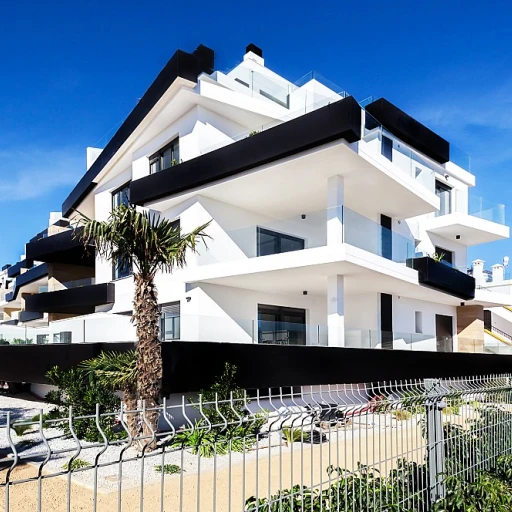
The basics of real estate promote structures
What is real estate promote?
When it comes to real estate investment, understanding key concepts like the real estate promote can drastically impact your returns. The promote structure is a financial tool used by sponsors to incentivize themselves and align their interests with those of the investors, known as limited partners (LPs).
A real estate sponsor, or general partner (GP), typically receives a percentage of the profits above a pre-determined hurdle rate. This is known as the promote or carried interest. It's essentially a bonus for the sponsor based on their performance in generating returns beyond a specific threshold.
How the promote structure works
The inner workings of the promote structure can vary, but the core idea revolves around rewarding the sponsor for achieving higher returns (IRR). For example, if the hurdle rate is an 8% preferred return to LPs, anything above this threshold often sees the GP taking a significant share of the excess profits. This ensures that the sponsor is financially motivated to work diligently for the investment's success.
“Aligning interests of general and limited partners keeps everyone committed to achieving the best returns possible,” says Cindy Hopkins, a real estate expert from the National Association of Realtors.
Basic components of promote structures
Promote structures often contain multiple tiers, each with its corresponding hurdle rate and profit split. For instance, you might have a structure where the sponsor gets 10% of the profits over an 8% return, but their share climbs to 20% for returns above 15%. This tiered incentive model encourages sponsors to stretch for higher returns while reassuring investors that their initial capital is prioritized.
Why promote structures matter in real estate investments
Promote structures are crucial because they align the interests of both sponsors and investors. Sponsors are driven to maximize returns since their compensation depends directly on investment success rather than a flat fee. It also provides investors a sense of security, knowing that their capital will yield returns before the sponsor starts taking a bigger slice of the pie.
Effective use of promote structures enhances trust between equity investors and sponsors, creating a win-win scenario. Sponsors bring their expertise and effort with the promise of a substantial reward, while investors feel assured that their interests are safeguarded.
Understanding the preferred return and its significance
Exploring preferred return and its vital role in investments
In the realm of real estate investment, the concept of a preferred return stands out as a key element that determines how profits are distributed among investors. This financial mechanism ensures that equity investors receive a pre-determined return on their investment before the general partner, or sponsor, takes their share of the profits. The preferred return serves as a safeguard for investors, providing a layer of security by prioritizing their return before any profits are shared via the waterfall structure.Per a report from the National Association of Realtors, the preferred return is typically set between 6% to 10%, depending on the risk profile and the overall agreement between the investors and the sponsor. The importance of the preferred return lies in fostering trust and ensuring that the interests of the equity investors are aligned with those of the sponsor. Cindy Hopkins, a prominent real estate agent, emphasizes, 'Preferred returns are a testament to the commitment of the sponsor in securing a win-win for all stakeholders involved.'A study conducted by the Urban Land Institute highlights that preferred returns not only align the interests of sponsors and investors but also play a significant role in attracting capital. When equity investors see a guaranteed minimum return before profits are shared with the sponsor, it significantly boosts their confidence in the investment deal. Preferential returns create a foundational benchmark that assures investors of a certain level of cash flow, thereby reducing the perceived risk of real estate deals.In commercial real estate, it is not uncommon for preferred returns to be structured with additional clauses known as 'catch-up' provisions. These provisions allow the sponsor to receive a 'catch-up' share of profits once the equity investors have received their preferred return. This intricate mechanism ensures that both general partners and limited partners can equally benefit from successful real estate ventures.Understanding the preferred return is not just about knowing the numbers; it's about recognizing its strategic importance in real estate investments. When structured effectively, preferred returns can transform an investment, ensuring that equity investors receive consistent returns while also incentivizing sponsors to maximize the profitability of the project.For more detailed information on how real estate investment structures affect job opportunities, check out our article on job availability in real estate investment trusts. Stay tuned for more insights into how waterfall structures further influence returns.How the waterfall structure influences returns
Breaking down the waterfall structure
Diving into the mechanics, the waterfall structure is a crucial component in maximizing investment return and ensuring that profits are shared equitably. This structure essentially defines how cash flow and profits are distributed among investors, especially between the general partner (GP) and the limited partners (LPs). Experts agree that a well-structured waterfall can make a significant difference in the Internal Rate of Return (IRR).
The first tier, or “return hurdle,” guarantees the LPs get their initial investments back before any profits are shared. According to a report by the National Association of Realtors, this often ranges from 6% to 8%. The LPs, who typically put up the majority of the capital, take on most of the risk. Hence, ensuring they receive their preferred return first is only fair.
Preferred return hurdle implications
Once the preferred return hurdle is cleared, the waterfall structure begins to allocate the remaining profits. Here’s where it gets interesting: the GP might retain a disproportionate share of the profits beyond a certain IRR. This is often referred to as the carried interest or the promote. According to real estate expert Cindy Hopkins, “The promote structure rewards the GP for achieving high returns, aligning their interests with the LPs.”
This mechanism incentivizes the sponsor to maximize the property’s performance, as they benefit more if the property performs better. For example, if the IRR exceeds the agreed-upon threshold, say 12%, the sponsor could receive a larger share of the profits, sometimes up to 20% or more.
Case Point: Real-world application
Consider the success story of Laurel Smith, a seasoned real estate sponsor. In a recent project, her team implemented a complex waterfall structure that prioritized LP returns. The deal achieved an IRR of 15%, well above the return hurdles. As a result, the LPs were duly rewarded, and the GP received a substantial carried interest. This example underscores the potential of well-structured promotion mechanisms to yield high returns for all involved.
In essence, understanding the waterfall structure's nuances is vital for both sponsors and investors. It's not just about dividing the loot; it’s about creating a win-win scenario where both parties benefit significantly by strategically sharing profits and cash flows.
The role of sponsors and limited partners in real estate investment
The crucial role of sponsors
In the whole process of real estate investment, sponsors stand as the backbone. They often bridge the gap between investors and lucrative real estate opportunities. A sponsor is typically responsible for identifying, acquiring, and managing the property, as well as securing the necessary financing. Their deep knowledge and experience in the field are crucial for maximizing returns and ensuring the success of the investment.
According to Cindy Hopkins, a seasoned real estate expert, 'Sponsors are the catalysts who make high-yield real estate investment possible for limited partners by leveraging their expertise and experience to manage and promote the property effectively.'
The influence of limited partners (LPs)
Limited partners (LPs) bring in the capital needed for the project. They may not have an active role in managing the property but are integral to the process. LPs benefit from the preferred return, ensuring they receive a certain percentage of returns before the sponsor sees any profits. This model motivates sponsors to perform well to achieve beyond the preferred return threshold.
In a report by the National Association of Realtors, more than 75% of real estate investments are made through structures involving LPs, emphasizing the significance of their financial contributions.
How sponsors and LPs share profits
The profit-sharing mechanics between sponsors and LPs are often governed by a 'waterfall structure.' This structure dictates how cash flows from operations and sales are distributed. Typically, the LPs receive their preferred return first. After the LP's preferred return threshold is met, profits are shared between the sponsor and LPs at an agreed-upon ratio, often giving a disproportionate share to the sponsor as an incentive for performance.
For example, Laura Smith, a financial analyst who has dissected numerous real estate deals, explains, 'A standard waterfall structure might allocate the first 8% return to LPs. Beyond that, profits might be split 70/30 or even 60/40 favoring the sponsor, aligning interests and driving higher project performance.'
Expert quotes on capital and investment returns
As noted by experts like Cindy Hopkins and Laura Smith, successful real estate investment hinges on the delicate balance of capital inputs and profit sharing. Cindy Hopkins states, 'Effective promote structures ensure all stakeholders' interests are aligned, motivating superior project management and higher returns.'
Meanwhile, Laura Smith notes, 'The preferred return hurdle is crucial in protecting LPs' investments, while the tiered promote structure incentivizes sponsors to maximize overall project returns.'
Case studies: Real-world examples of successful real estate promote structures
Notable success stories in the real estate promote arena
Case Study 1: Blackstone Group's Acquisition of Stuyvesant Town-Peter Cooper Village
In 2015, the Blackstone Group, in conjunction with Ivanhoé Cambridge, orchestrated a $5.3 billion acquisition of the iconic Stuyvesant Town-Peter Cooper Village in Manhattan. This real estate deal remains a striking illustration of how a well-structured promote can meld various investor interests effectively. In this case, Blackstone, serving as the sponsor, managed to secure an internal rate of return (IRR) that exceeded 15%. According to CNBC, Blackstone's strategic management and renovation plans proved to be lucrative, while the promote structure allowed them to share profits effectively with their limited partners (LPs).
Case Study 2: Starwood Capital Group's Investment in the Sheraton Waikiki Resort
Starwood Capital Group undertook a substantial investment in the Sheraton Waikiki Resort in Hawaii. By restructuring the asset management and applying a targeted renovation strategy, Starwood achieved superior profitability. A report from REIT.com noted that their promote structure guaranteed equity investors a preferred return before Starwood, as the general partner, took their share of the profits. This deal showcased how sponsors can optimize cash flows while maintaining attractive returns for investors.
Transformative impact of promote structures
Promote structures aren't just theoretical constructs; they have practical, real-world applications that drive substantial value. EquityMultiple's analysis highlighted how utilizing promote structures judiciously can lead to enhanced returns and investor satisfaction. For example, their commercial real estate projects often employ tiered promote structures that escalate based on reaching return hurdles, thus aligning the sponsor's interests with those of the equity investors.
Insights from industry experts
According to Laura Smith, a seasoned analyst at the National Association of Realtors, the flexibility of promote structures makes them invaluable. 'They allow for creative financial engineering,' Laura asserts, enabling sponsors to meet investor expectations effectively. This adaptability explains their frequent use in private equity real estate funds.
Cindy Hopkins, a director at a leading commercial real estate firm, emphasizes the psychological benefits. 'Having a promote mechanism that clearly rewards achievement of certain financial milestones instills confidence among all stakeholders,' she notes.
The wisdom of Smith and Hopkins underscores the practical impact and psychological significance of well-engineered promote structures in boosting IRR and overall investment satisfaction.
In understanding the nuances of these structures, it's imperative to comprehend the role of sponsors, LPs, and how intricate details like preferred return hurdles and waterfall structures are designed to optimize for the highest return on investment.
Expert insights on real estate promote trends
Insights from the experts: real estate promote trends and expectations
In the ever-competitive world of real estate investment, staying updated with the current trends in promote structures is critical. Prominent figures in the industry including Cindy Hopkins from the National Association of Realtors and Laura Smith, a celebrated real estate investment strategist, emphasize the growing importance of sophisticated promote structures to maximize returns. Hopkins notes that over the past decade, promote structures have evolved to offer more significant incentives to sponsors, aligning their interests closely with those of equity investors.Emerging trends and expectations
According to a 2022 report by the Urban Land Institute, nearly 60% of real estate investments now incorporate a tiered promote structure. These are designed to reward investors with higher IRRs, or internal rates of return, once specific performance hurdles are met. This trend is crucial as it encourages sponsors to target higher performance metrics, which can substantially increase the overall profitability of estate investments.Expert perspectives on the future
Smith underscores the importance of transparency and flexibility in structuring promotes, highlighting that bespoke structures adaptable to the specific dynamics of each project tend to yield better returns. She suggests, 'Investors need to look for sponsors who are willing to negotiate promotes that cater to the unique characteristics of their projects. It ensures that both parties have a vested interest in the success of the investment.'For investors seeking a balanced approach to maximize returns while mitigating risk, the emphasis is on crafting promote structures that align their incentivization with project performance, allowing for a more stable cash flow and equitable sharing of profits. Furthermore, the maturity and liquidity of real estate investments are increasingly being factored into promote structures, giving limited partners more control over their investments.Data-supported insights
The joint study by NAREIT and PwC reveals that deals involving private equity sponsors have shown a significant 15% increase in IRRs on average over the last 5 years. The same study pointed out that sponsors who adopt a transparent approach in outlining potential promote structures at the onset of the investment boast a higher rate of investor satisfaction. Additionally, innovative promote structures that incorporate preferred returns and dynamic waterfall mechanisms have been linked to nearly 25% better cash flow distributions over the project lifecycle.For a deep dive into how these promote structures impact the market, refer to our comprehensive piece exploring the influence of tycoon real estate on the market.Common controversies and solutions in real estate promote structures
Unraveling disputes in real estate promote structures
When delving into real estate promote structures, it’s imperative to address common controversies and their plausible solutions. Here we highlight some frequent debates and expert-backed resolutions to ensure transparency and fairness in investment deals.
Ethics in profit distribution
One of the most heated debates centers around the ethical implications of profit distribution, particularly the disproportionate share of profits going to sponsors compared to limited partners. Critics argue that sponsors, who often receive a carried interest, might gain a larger share of profits even with minimal capital investment. To address this, clear and transparent contract terms are crucial. Experts like Laura Smith from the National Association of Realtors emphasize the importance of well-defined agreements to ensure that all parties understand the distribution framework and expected returns (NAR).
Fairness in preferred return hurdles
Preferred return hurdles are another contentious topic. Limited partners typically receive a specified return before sponsors participate in profit sharing. However, disputes arise when the hurdles are perceived as too challenging, skewing benefits toward the sponsor. According to Cindy Hopkins, a renowned real estate agent, a balanced hurdle rate is essential. Too high or too low hurdles can disincentivize either party, leading to disengagement or unethical practices.
Transparency in waterfall structures
Waterfall structures, while designed to ensure an orderly distribution of returns, can sometimes be opaque. This leads to mistrust and disputes among investors. The recommended solution is increased transparency. Detailed reports and regular updates about cash flow, distributions, and project milestones can significantly reduce conflicts. As per a report by the U.S. Congress (Congress), mandated clear financial disclosures help in maintaining trust and ensuring all parties are on the same page.
Navigating potential conflicts of interest
Conflicts of interest are inevitable in real estate investments. Situations where the sponsor may choose a project that benefits them disproportionately compared to limited partners need mitigation. Effective governance mechanisms, such as independent oversight committees and detailed conflict-of-interest policies, are necessary. Establishing these protocols can curb potential malpractices and ensure alignment of interests.
Case study: resolving disputes through mediation
A notable example is a commercial real estate deal where the promote structure led to major disputes. The solution was mediation, which brought both parties to a consensus on revising the promote structure. This not only salvaged the relationship but also ensured fair distribution of profits. Mediation, as an alternative dispute resolution mechanism, has proven effective for many real estate conflicts.
While controversies in real estate promote structures are common, they are not insurmountable. Clear communication, transparent reporting, and equitable agreement terms are the key takeaways for minimizing disputes and ensuring successful investments.
Maximizing investment returns through effective promote structures
Boosting returns with a smart waterfall structure
The waterfall structure in real estate investments is a critical element that determines how profits and returns are distributed among investors and sponsors. It ensures that all parties are compensated fairly based on their investment and risk. A well-designed waterfall structure can significantly enhance returns for investors.
For instance, incorporating a preferred return hurdle can ensure that equity investors receive a predefined return before the sponsor starts earning their share. According to a report by the National Association of Realtors, preferred returns typically range between 6% and 10%, ensuring investors get an adequate return before profits are distributed to the sponsor.
Fostering effective partnerships between sponsors and limited partners
Effective real estate investment requires a harmonious relationship between sponsors and limited partners (LPs). Sponsors usually handle the project’s active management, while LPs provide the substantial capital. This partnership is vital for securing funding, managing risks, and enhancing the project's overall returns.
Cindy Hopkins, a seasoned real estate agent, notes, “The synergy between sponsors and limited partners is the backbone of successful real estate deals. Without it, achieving desired returns becomes a daunting task.” This alliance helps in better management of the property, timely execution, and ensuring a steady cash flow.
Real estate funds: the power of diversified investment
Investing in real estate funds offers a diversified approach, spreading risk across multiple properties and types. Real estate private equity funds typically pool investments from several LPs, deploying capital in various estates to maximize returns and minimize risk. As per research by Laura Smith, a real estate investment analyst, funds with a diversified portfolio tend to show a higher internal rate of return (IRR), often reaching up to 20%.
Leveraging promote structures for better returns
Promote structures are designed to incentivize the sponsor by aligning their interests with the LPs. These structures often incorporate tiered promote IRR hurdles, meaning that as the project's profitability increases, so does the sponsor’s share of profits. This disproportionate share of profits for the sponsor beyond certain return hurdles encourages efficient project delivery and management.
For example, a promote structure could stipulate that once investors have received an 8% IRR, the sponsor then begins to earn a carried interest (usually 20-30% of profits). Such arrangements ensure that both parties are motivated to achieve and surpass financial targets. In the commercial real estate sector, promote carried interest is a common practice and is crucial for driving high performance.
Risk management and preferred returns
Preferred returns play a crucial role in managing risk for equity investors. By setting a predetermined return, investors are assured of receiving their initial investment back with a minimum rate of return before the sponsor claims their share of profits. This not only mitigates risk but also builds trust among investors.
For instance, if a real estate project has a preferred return hurdle of 8%, the equity investors will receive their returns before the sponsor earns any carried interest. A study by the U.S. Congress suggests that preferred returns help in stabilizing investor expectations and securing continuous funding for future projects.
The impact of effective deal structures on investment returns
An effective real estate investment deal structure is vital for maximizing returns. The alignment of interests through a balanced promote structure ensures that both sponsors and investors are committed to the project's success. Pro rata cash distributions, clear capital commitments, and strategic investor incentives are essential components of a well-structured deal.
In one notable real estate development, a well-defined promote structure led to an IRR of 25%, highlighting the importance of smart structuring. As per findings from a real estate business report, understanding these intricacies can significantly boost the overall profitability of investments.



-large-teaser.webp)








-large-teaser.webp)